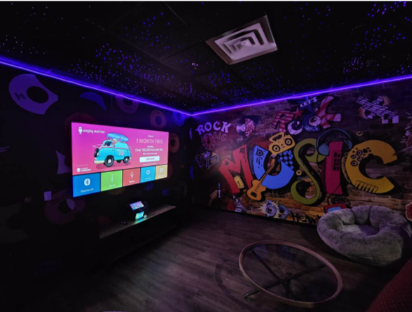AI Shopper Psychology: Redefining Consumer Behavior in Retail

Shopping has always been as much about emotions as it is about logic. From impulse purchases at the checkout line to the growing trend of mindful buying, the psychology behind every shopping decision reveals how humans connect with products, brands, and experiences. Today, the rise of AI in retail has added a new dimension to this equation—what we can now call AI shopper psychology.
This term goes beyond traditional consumer behavior analysis. It reflects how artificial intelligence interprets, predicts, and even shapes the decisions shoppers make across digital and physical touchpoints. For U.S. consumers who are increasingly balancing convenience, personalization, and trust, understanding AI-driven shopper psychology is crucial in revealing why some retail experiences feel more satisfying than others.
What Does AI Shopper Psychology Mean?
At its core, AI shopper psychology is the study and application of how artificial intelligence perceives, analyzes, and influences consumer choices. It involves decoding:
- What shoppers want (preferences, styles, product categories).
- When they want it (timing of purchases, seasonal trends, urgency).
- Why they want it (emotions, needs, social factors, sustainability concerns).
- How they shop (online browsing, mobile shopping, in-store behavior).
By combining machine learning, behavioral analytics, and big data, AI enables retailers to interpret these patterns at scale. The result is a more intuitive shopping journey where buyers feel understood rather than marketed to.
Key Aspects of AI Shopper Psychology
1. Personalization as an Expectation
For many U.S. shoppers, personalization has moved from a “nice-to-have” to an expectation. AI enables hyper-personalized product suggestions, promotions, and content tailored to individual behavior.
For example, AI in retail can detect that a shopper frequently searches for sustainable fashion and then prioritize eco-friendly collections in their feed. This creates a sense of relevance, which not only boosts conversion rates but also enhances long-term loyalty.
- Predictive Buying Behavior
Traditional marketing often relied on historical purchase data. AI, however, can predict what a shopper is likely to buy next based on current browsing patterns, social interactions, and even contextual signals like weather or location.
For instance, AI may anticipate that a consumer browsing hiking gear in early spring is also likely to purchase related items such as water bottles, sunscreen, or outdoor apparel. This predictive capacity defines a significant element of AI shopper psychology—helping retailers meet demand before the consumer consciously expresses it.
- Emotional Triggers in Shopping
Shopping decisions are not always rational. AI tools are now learning to recognize emotional cues—whether through sentiment analysis in reviews, tone in customer service chats, or reactions to social media campaigns.
By mapping emotions to shopping behavior, AI enables retailers to adjust strategies in real time. For instance, an online shopper expressing frustration over delivery delays could be offered free shipping on their next order as an emotional reassurance. This responsiveness builds trust while demonstrating empathy at scale.
- Convenience and Instant Gratification
The American consumer market is built around speed and convenience. From one-click checkouts to same-day delivery, AI in retail has accelerated the path from browsing to buying.
AI systems simplify choices by curating fewer but more relevant options, reducing decision fatigue. They also optimize checkout processes, ensuring frictionless experiences that align with consumers’ psychological preference for instant gratification.
- Social Influence and Community Psychology
AI shopper psychology also taps into the social side of decision-making. Recommendations based on peer reviews, influencer preferences, or community-driven shopping trends harness the psychological need for validation and belonging.
In U.S. retail markets, where social shopping and user-generated content are gaining traction, AI’s ability to surface products tied to community preferences makes retail experiences more engaging and trustworthy.
- The Trust Factor in AI Decisions
While AI offers efficiency and personalization, trust remains a psychological barrier. Many U.S. shoppers worry about how much data is being collected, how it’s being used, and whether recommendations are biased.
Addressing this aspect of AI shopper psychology requires retailers to prioritize transparency, data privacy, and ethical use of AI tools. Brands that succeed in doing so stand to gain a competitive edge in customer loyalty.
Real-World Applications of AI in Retail Shopper Psychology
- Recommendation Engines: Amazon, Walmart, and Target use AI to provide tailored suggestions, shaping shopper journeys.
- Dynamic Pricing: AI adjusts product pricing in real time based on demand, competition, and shopper behavior.
- Virtual Try-Ons: Beauty and apparel brands use AI-powered AR to influence shopper confidence and reduce hesitation.
- Customer Sentiment Analysis: Retailers monitor reviews and feedback to identify patterns of satisfaction or frustration.
These applications reveal how AI retail startups and established players alike are relying on shopper psychology insights to fine-tune every step of the purchase journey.
How Glance AI Understands Shopper Psychology
One standout example in this space is Glance AI, which bridges the gap between consumer psychology and personalized shopping assistance. Instead of relying solely on past purchases, Glance AI interprets style preferences, browsing habits, and even subtle behavioral cues to curate tailored fashion and retail experiences.
For shoppers, this feels less like being targeted and more like being understood. For retailers, it provides a smarter way to connect with audiences without overwhelming them with irrelevant promotions. By respecting individual psychology and providing context-driven recommendations, Glance AI represents how AI in retail can evolve from transactional assistance to emotional intelligence.
Conclusion
The rise of AI shopper psychology signals a future where retail is not just about efficiency, but about empathy. U.S. consumers increasingly want brands that understand their needs, values, and emotions while delivering convenience and trust.
As AI in retail continues to advance, the psychology-driven insights it uncovers will shape the future of shopping in ways we are only beginning to understand. From hyper-personalization to emotional intelligence, the retail industry is evolving into an experience that doesn’t just serve shoppers but resonates with them on a deeper level.
For brands and consumers alike, the question is no longer whether AI will influence shopping behavior—it’s how much of that psychology-driven personalization will define the retail experiences of tomorrow.







